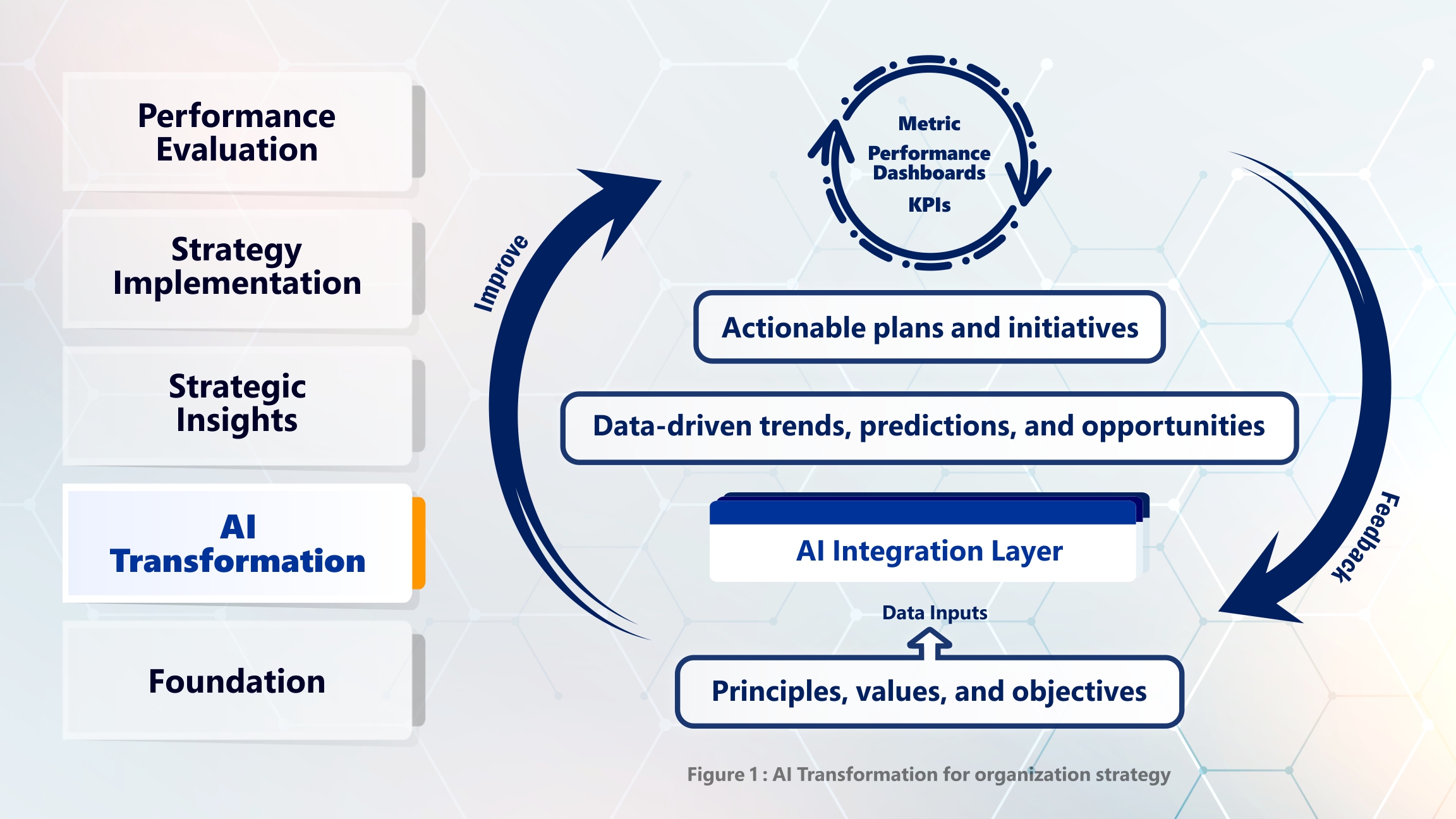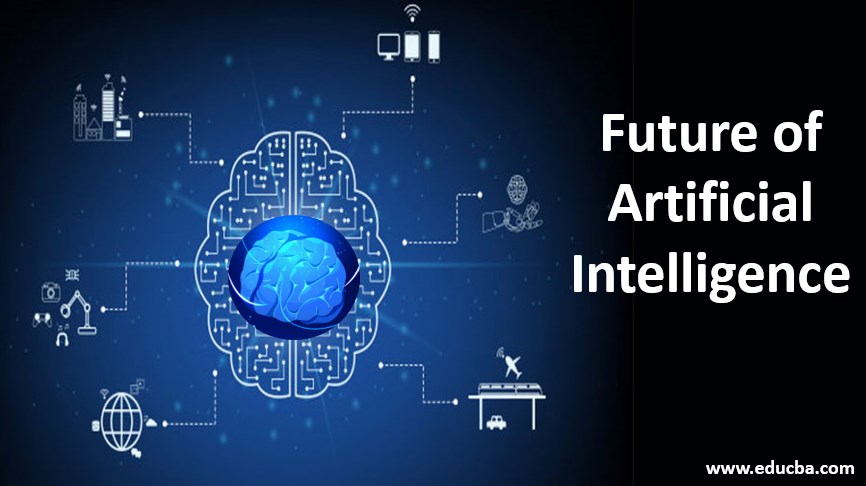P1]
Business Intelligence (BI) has long been the cornerstone of data-driven decision-making. For years, businesses have relied on BI tools to analyze historical data, identify trends, and gain a better understanding of their operations. However, the sheer volume and complexity of data generated today demand more than traditional BI solutions can offer. Enter Artificial Intelligence (AI), a powerful force reshaping the landscape of BI and propelling it into a new era of intelligent insights.
This article delves into the transformative impact of AI on BI, exploring how AI is enhancing traditional BI capabilities, enabling new forms of analysis, and ultimately empowering businesses to make smarter, faster, and more informed decisions.
From Descriptive to Predictive and Prescriptive: The Evolution of BI with AI
Traditional BI primarily focuses on descriptive analytics, providing insights into what has happened in the past. Reports, dashboards, and visualizations present historical data, allowing users to identify trends and patterns. However, AI takes BI beyond simply describing the past and present, enabling predictive and prescriptive analytics:
- Predictive Analytics: AI algorithms can analyze historical data and identify patterns to forecast future trends and outcomes. By leveraging machine learning models, BI systems can predict customer churn, forecast sales, optimize inventory levels, and anticipate potential risks. This allows businesses to proactively address challenges and capitalize on opportunities.
- Prescriptive Analytics: Going a step further, prescriptive analytics uses AI to recommend actions based on predicted outcomes. It helps businesses determine the best course of action to achieve specific goals. For example, prescriptive analytics can suggest optimal pricing strategies, recommend personalized marketing campaigns, or optimize supply chain operations.
This shift from descriptive to predictive and prescriptive analytics empowers businesses to move from reactive to proactive decision-making, gaining a competitive edge in today’s dynamic market.
Key AI Technologies Powering the BI Revolution:

Several AI technologies are driving the transformation of BI, each offering unique capabilities:
- Machine Learning (ML): ML is arguably the most impactful AI technology in BI. ML algorithms can automatically learn from data without explicit programming, identifying patterns and relationships that humans might miss. They are used for various tasks, including:
- Anomaly Detection: Identifying unusual patterns and outliers in data, which can indicate fraud, security breaches, or operational inefficiencies.
- Customer Segmentation: Grouping customers into distinct segments based on their behavior, preferences, and demographics, enabling personalized marketing and targeted product development.
- Predictive Modeling: Building models to predict future outcomes, such as sales forecasts, customer churn, or credit risk.

- Natural Language Processing (NLP): NLP allows computers to understand and process human language. In BI, NLP enables users to interact with data using natural language queries, making data exploration more accessible to non-technical users.
- Natural Language Querying (NLQ): Users can ask questions in plain English, and the BI system will automatically translate them into database queries and retrieve the relevant information.
- Sentiment Analysis: Analyzing text data from customer reviews, social media posts, and surveys to understand customer sentiment and identify areas for improvement.
- Deep Learning (DL): DL is a subset of ML that uses artificial neural networks with multiple layers to analyze complex data patterns. DL is particularly useful for tasks such as image recognition, speech recognition, and natural language understanding.
- Image Recognition: Analyzing images to identify objects, patterns, and anomalies, which can be used in industries such as manufacturing, healthcare, and retail.
- Fraud Detection: Identifying fraudulent transactions by analyzing complex patterns in financial data.
- Robotic Process Automation (RPA): While not strictly an AI technology, RPA can be integrated with BI to automate repetitive tasks, freeing up analysts to focus on more strategic initiatives.
- Data Extraction and Transformation: Automating the process of extracting data from various sources and transforming it into a format suitable for analysis.
- Report Generation: Automating the generation of reports based on predefined templates and data sources.
Benefits of Integrating AI into BI:
The integration of AI into BI offers a multitude of benefits for businesses:
- Enhanced Data Discovery: AI algorithms can automatically analyze vast amounts of data and identify hidden patterns and relationships that humans might miss, leading to new insights and discoveries.
- Improved Accuracy and Efficiency: AI-powered BI systems can automate many of the manual tasks associated with traditional BI, such as data cleansing, report generation, and anomaly detection, improving accuracy and efficiency.
- Faster Decision-Making: By providing real-time insights and predictive analytics, AI enables businesses to make faster and more informed decisions.
- Personalized Experiences: AI can be used to personalize customer experiences by tailoring products, services, and marketing campaigns to individual preferences.
- Predictive Maintenance: AI can analyze sensor data from equipment and machinery to predict potential failures, allowing businesses to schedule maintenance proactively and avoid costly downtime.
- Fraud Detection: AI can identify fraudulent transactions by analyzing complex patterns in financial data, helping businesses to prevent financial losses.
- Improved Customer Service: AI-powered chatbots can provide instant customer support, answering questions and resolving issues quickly and efficiently.
Challenges and Considerations:
While the benefits of AI in BI are undeniable, there are also challenges and considerations that businesses need to address:
- Data Quality: AI algorithms are only as good as the data they are trained on. Poor data quality can lead to inaccurate predictions and flawed insights. Businesses need to invest in data quality initiatives to ensure that their data is accurate, complete, and consistent.
- Data Security and Privacy: AI algorithms can process sensitive data, raising concerns about data security and privacy. Businesses need to implement robust security measures to protect their data from unauthorized access and comply with relevant privacy regulations.
- Explainability and Transparency: Some AI algorithms, such as deep learning models, can be difficult to interpret, making it challenging to understand why they are making certain predictions. This lack of explainability can be a barrier to adoption, particularly in regulated industries. Businesses need to prioritize explainable AI (XAI) to ensure that their AI systems are transparent and understandable.
- Skills Gap: Implementing and managing AI-powered BI systems requires specialized skills in areas such as data science, machine learning, and data engineering. Businesses need to invest in training and development to bridge the skills gap and ensure that they have the expertise to leverage AI effectively.
- Cost: Implementing AI-powered BI systems can be expensive, requiring investment in hardware, software, and skilled personnel. Businesses need to carefully evaluate the costs and benefits of AI before making a significant investment.
The Future of AI in BI:
The future of AI in BI is bright, with ongoing advancements in AI technologies and increasing adoption across industries. We can expect to see:
- More Sophisticated AI Algorithms: AI algorithms will become even more sophisticated, capable of analyzing more complex data patterns and providing more accurate predictions.
- Increased Automation: AI will automate even more of the tasks associated with BI, freeing up analysts to focus on more strategic initiatives.
- Democratization of AI: AI will become more accessible to non-technical users, allowing them to leverage AI to gain insights from data without requiring specialized skills.
- Integration with Cloud Computing: AI will be increasingly integrated with cloud computing platforms, making it easier for businesses to access and deploy AI-powered BI solutions.
- Edge Computing: AI will be deployed at the edge of the network, allowing businesses to process data closer to the source and make real-time decisions.
Conclusion:
AI is revolutionizing the field of Business Intelligence, transforming it from a descriptive tool to a powerful engine for predictive and prescriptive analytics. By leveraging AI technologies such as machine learning, natural language processing, and deep learning, businesses can unlock new insights, automate tasks, improve accuracy, and make faster, more informed decisions. While challenges remain, the benefits of integrating AI into BI are undeniable, and businesses that embrace this transformation will be well-positioned to thrive in the data-driven economy of the future. As AI continues to evolve, its impact on BI will only grow stronger, creating new opportunities for businesses to gain a competitive edge and achieve their strategic goals.
FAQ:
Q: What is the difference between traditional BI and AI-powered BI?
A: Traditional BI focuses on descriptive analytics, providing insights into past events. AI-powered BI goes beyond this by enabling predictive and prescriptive analytics, forecasting future trends and recommending actions.
Q: What are some examples of AI applications in BI?
A: Examples include anomaly detection, customer segmentation, predictive modeling, natural language querying, sentiment analysis, and fraud detection.
Q: What are the key benefits of using AI in BI?
A: Benefits include enhanced data discovery, improved accuracy and efficiency, faster decision-making, personalized experiences, and predictive maintenance.
Q: What are the challenges of implementing AI in BI?
A: Challenges include data quality, data security and privacy, explainability and transparency, the skills gap, and cost.
Q: How can businesses prepare for the future of AI in BI?
A: Businesses should invest in data quality initiatives, prioritize data security, embrace explainable AI, invest in training and development, and carefully evaluate the costs and benefits of AI.
Q: Is AI going to replace BI analysts?
A: No, AI is not likely to replace BI analysts entirely. Instead, it will augment their capabilities, automating repetitive tasks and freeing them up to focus on more strategic initiatives. Analysts will still be needed to interpret AI-generated insights, validate results, and communicate findings to stakeholders.
Q: What industries are benefiting most from AI in BI?
A: Many industries are benefiting, including finance, healthcare, retail, manufacturing, and telecommunications. The specific applications and benefits vary depending on the industry.
Q: How do I get started with AI in BI?
A: Start by identifying specific business problems that AI can help solve. Then, assess your data quality and infrastructure, and develop a plan for implementing AI-powered BI solutions. Consider partnering with experienced AI vendors or consultants to accelerate your progress.


Leave a Reply